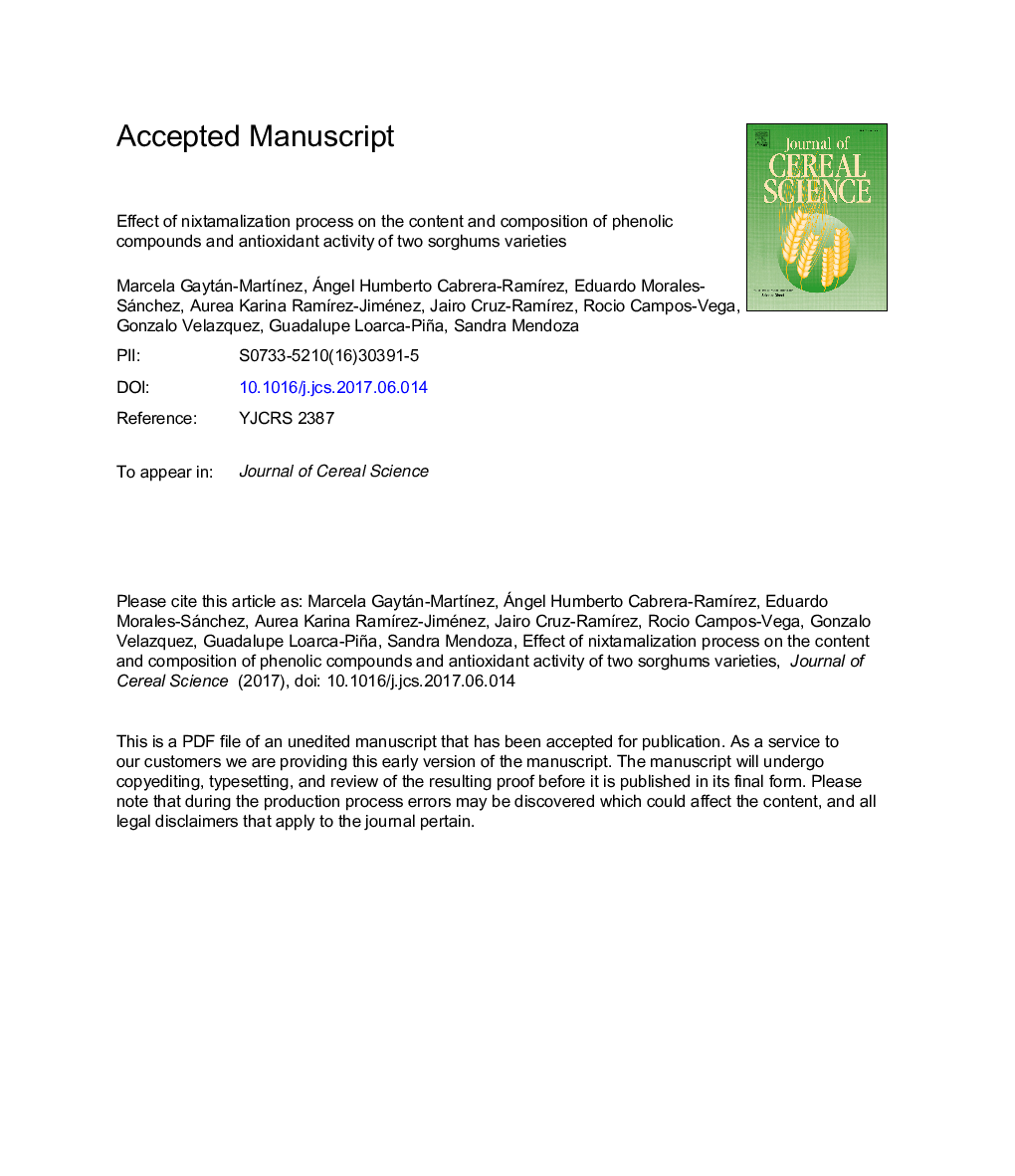| Article ID | Journal | Published Year | Pages | File Type |
|---|---|---|---|---|
| 5762395 | Journal of Cereal Science | 2017 | 31 Pages |
Abstract
Sorghum, a competitive crop due to its agronomical advantages, has gained interest as functional food. Sorghum contains phytochemicals with health benefits and presents some antinutritional compounds such as condensed tannins (CTs). However, it is well known that CTs exhibit antioxidant capacity. This study evaluated the effect of Mexican nixtamalization on total phenols, CTs and antioxidant capacity using two varieties of sorghum. Different conditions of lime (0, 1 and 2%) and cooking time (20, 30 and 40Â min) were tested to obtain the best treatment after optimization using multiple linear regression analysis, aiming to minimize the CTs content and maximize the antioxidant capacity. CTs were reduced at 27% in white sorghum and 90%, in red sorghum. Total phenols, flavonoids and antioxidant capacity had an inverse correlation with lime concentration and cooking time. The best conditions for preserving antioxidant capacity with low content of tannins were 1.13% of lime and 31.11Â min cooking. The phenolic profile obtained by HPLC showed reductions in gallic and chlorogenic acids only in white sorghum, whereas catechin and quercetin decreased in both varieties. We concluded that nixtamalization effectively reduced CTs to safety intake values, allowing to preserve other phenolic compounds and antioxidant capacity.
Related Topics
Life Sciences
Agricultural and Biological Sciences
Agronomy and Crop Science
Authors
Marcela Gaytán-MartÃnez, Ángel Humberto Cabrera-RamÃrez, Eduardo Morales-Sánchez, Aurea Karina RamÃrez-Jiménez, Jairo Cruz-RamÃrez, Rocio Campos-Vega, Gonzalo Velazquez, Guadalupe Loarca-Piña, Sandra Mendoza,
